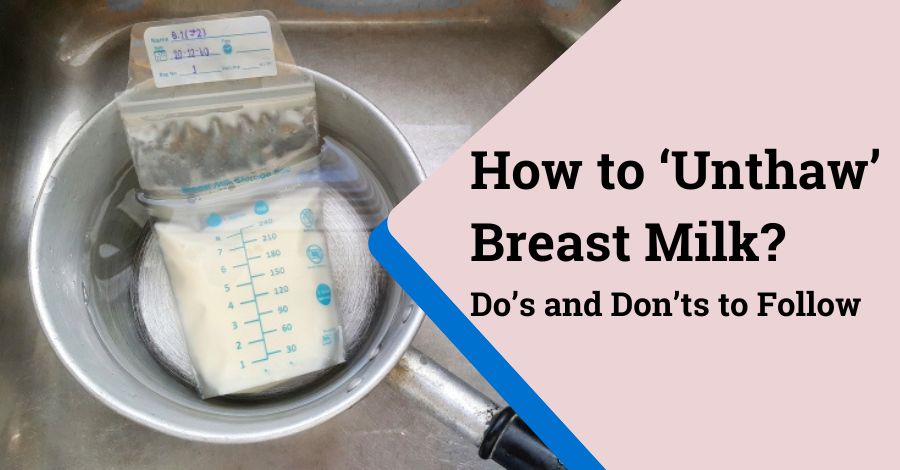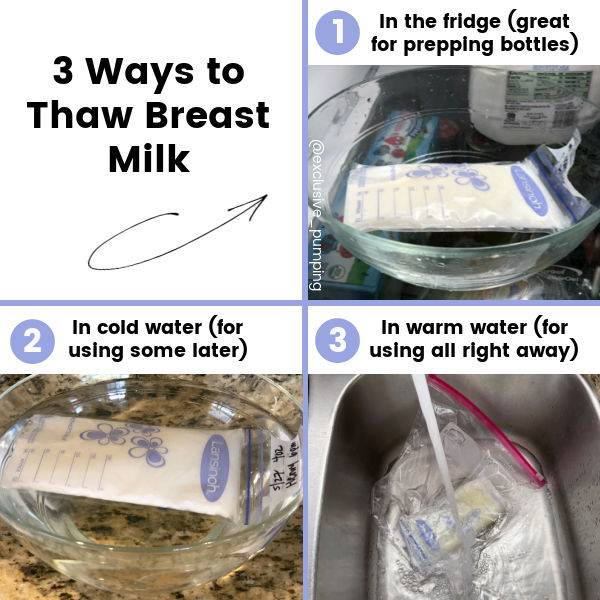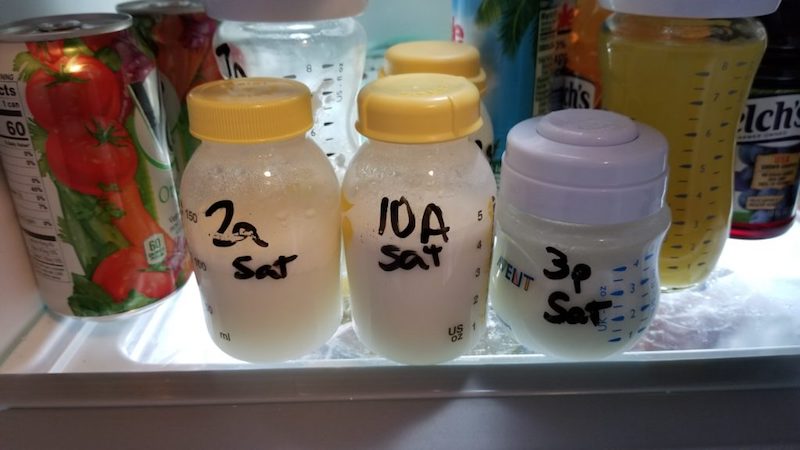
Breastfeeding is a special and fulfilling journey, but figuring out how to handle stored milk can be confusing. Freezing breast milk is a good way to always have some ready, whether you’re going back to work, taking a break, or just want to have extra on hand. When you need to use frozen breast milk, you have to thaw it correctly. This ensures the milk stays safe and good for your baby. Let’s chat about the best way of how to unthaw breast milk and why it’s so important.
Understanding the Term ‘Unthaw’
‘Unthaw’ might sound confusing, but it just means thawing or defrosting something that’s frozen. When we talk about unthawing breast milk, we’re just turning it back into liquid. This is an important step to make sure the milk is safe and ready for your baby.
Why Proper Unthawing Is Essential
Unthawing breast milk correctly is really important. It helps keep the nutrients and antibodies in the milk. These are essential for your baby’s growth and health. If you don’t thaw the milk properly, some of these important parts can be lost. This means the milk won’t be as nutritious.
Properly unthawing breast milk is crucial for safety. If milk is thawed incorrectly, it can grow bacteria. This can be harmful to your baby. By following the correct methods, you reduce the risk of bacteria. And that helps to keep the milk fresh and healthy.
Methods of How to Unthaw Breast Milk
There are a few effective methods for unthawing breast milk, each with its own benefits.

Thawing in the Fridge
The best way to thaw breast milk is by putting it in the fridge. Simply move the milk from the freezer to the refrigerator. Let it thaw slowly over 12 to 24 hours. This slow process helps keep the milk’s nutrients and prevents bacteria from growing. After it’s thawed, you can keep it in the fridge for up to 24 hours. This method is great if you plan ahead and want to ensure the milk stays safe.
Thawing in Warm Water
If you don’t have much time and wondersing how to unthaw breast milk quickly, then warm water can help. Just put the milk bag or bottle in a bowl of warm water. Gently swirl it around to help it thaw faster. Gently swirl it around to mix it up. This technique helps mix any separated fat and warms the milk evenly. It’s important that the water is warm, not hot, to prevent damaging the milk’s nutrients. This method is faster than thawing in the fridge. It also keeps the milk safe and in good quality.
Thawing Under Running Warm Water
If you need to thaw the milk quickly, try holding the container under warm running water. It’s a speedy alternative to using a bowl of warm water and works just as well. Just make sure the water is not hot to protect the milk’s nutritional content. This approach is helpful when you need to prepare milk on the go.
It’s important to avoid using the microwave or boiling water to unthaw breast milk. These methods can create hot spots that might burn your baby’s mouth and can also destroy some of the milk’s valuable nutrients.
Tips for How to Unthaw Breast Milk Safely
Handling breast milk properly ensures that it remains safe and nutritious. Here are some additional tips to keep in mind.
Labeling the Milk
Always label your milk with the date you pumped it. This simple step helps you keep track of which milk to use first and avoids wasting any. It’s a good practice to use the oldest milk first to ensure freshness.

Avoiding Refreezing
Once breast milk is thawed, don’t refreeze it. Refreezing can ruin the milk’s nutrients and lead to bacteria growth. Use the milk within 24 hours to keep it safe and fresh.
Gently Mixing
After thawing, you might notice that the fat has separated from the milk. Gently swirl the container to mix the fat back into the milk. Avoid shaking it vigorously, as this can break down some of the proteins and affect the milk’s quality.
Checking the Temperature
Before feeding your baby, always check the milk’s temperature. To check if the milk is at a good temperature, put a few drops on your wrist. It should feel warm, not hot. This is really important to make sure the milk is just right for your baby.
Common Concerns
Many new moms have questions about unthawing breast milk. Here are some answers to common concerns:
Can Breast Milk Be Thawed at Room Temperature?
It’s better not to thaw breast milk at room temperature. Bacteria can grow quickly this way. Use the fridge or warm water to thaw milk safely instead.
What If the Milk Smells Different?
Sometimes, thawed milk might smell a bit different. This doesn’t always mean it’s spoiled. If the milk smells sour or strange, it’s best not to use it. Just trust your nose and throw away any milk that seems off.
Is It Normal for Thawed Milk to Look Different?
Yes, it’s normal for thawed milk to look different from fresh milk. The milk might appear a bit separated or have a different color. This is just due to the separation of fat. Gently swirling the milk will mix it back together.
The Importance of Proper Breast Milk Handling
Taking good care of breast milk from the moment you pump it until you feed your baby is really important. Storing, freezing, and thawing it the right way helps keep the milk nutritious. This way, your baby gets the best milk possible.
Breast milk is a precious resource, full of important nutrients and antibodies that support your baby’s health. By following the recommended thawing methods, you can preserve these benefits and ensure that your baby receives the highest quality milk.
If you’re not sure about any step, don’t hesitate to ask your doctor or a lactation consultant. They are there to help you and make sure everything goes smoothly with breastfeeding.
Final Thoughts
Unthawing breast milk is not so complicated as it sounds. With a few easy tips, you can make sure your baby always gets great milk. Whether you’re new to breastfeeding or have been doing it for a while, these simple steps will help make the process smoother and less stressful.
Every bit of breast milk is precious. By handling it the right way, you’re giving your baby a great start. Enjoy the journey of breastfeeding and happy feeding!
Sources
- Breast milk storage: Do’s and don’ts – https://www.mayoclinic.org/healthy-lifestyle/infant-and-toddler-health/in-depth/breast-milk-storage/art-20046350
- Storing and Thawing Breast Milk – https://wicbreastfeeding.fns.usda.gov/storing-and-thawing-breast-milk#

Hi, I’m Lindley! I’m a stay-at-home-mom sharing all of the tips and tricks I learn throughout my motherhood journey. I’m now navigating through wife life and being a mom while blogging my crazy adventures. I’m so glad to have you along for the ride!




I am often to blogging and i really recognize your content. The article has really peaks my interest. I am going to bookmark your site and keep checking for new information.